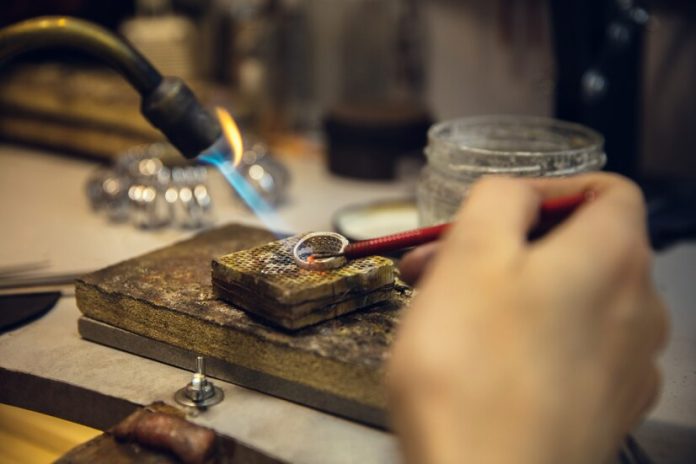Buffing compounds are essential materials in jewelry making that help achieve the desired surface finish and shine. Buffing or polishing compounds are available in various formulations and grades, each with specific abrasive particles and binding agents tailored to achieve particular results on different metals and materials. Professional jewelers use them to meet the industry’s exacting standards and create high-quality, visually stunning, durable, high-quality products. This article will explore how these compounds help gain ideal jewelry-making results.
Achieving a Smooth Surface Finish
Buffing compounds are used in jewelry making to achieve a smooth surface finish on metals such as gold, silver, and platinum. The compound’s abrasive particles help remove scratches, dents, and other imperfections, leaving a smooth, polished surface. It enhances the appearance and value of the jewelry, making it more appealing to customers.
It also prepares surfaces for plating, enamelling, or other surface treatments by creating a uniform and clean surface. It helps ensure the surface treatment adheres appropriately, creating a durable and long-lasting finish. Additionally, using a suitable compound can reduce the time and effort required to achieve a high-quality finish, making jewelry more efficient and cost-effective.
Enhancing Shine and Lustre
Finer abrasive particles, such as those found in jewelers’ rouge, can help to bring out the natural shine and brightness of the metal, giving it a high-quality finish. It can make the jewelry more attractive and desirable to customers.
Furthermore, polishing compounds can create different surface finishes and textures, such as matte or brushed, adding visual interest and variety to jewelry designs. Creating unique finishes can set a jeweler’s products apart from their competitors and make them more appealing to customers who value originality and quality.
Improving Efficiency and Accuracy
They are designed to work with specific metals and materials, ensuring the finish is consistent and high-quality. It can save time and reduce errors, making jewelry-making more efficient and cost-effective.
Using a suitable compound can also extend the life of jewelry-making tools and equipment by reducing wear and tear. The consistent and high-quality finish can reduce the need for rework or refinishing, further reducing the time and cost of production. It makes them an indispensable tool for professional jewelers who demand high-quality finishes for their products.
Providing Flexibility and Versatility
Depending on the desired finish and the metal type, jewelers can choose from multiple compounds with unique properties and abrasive particles. It allows for greater precision and control over the finish, making it easier to achieve the desired result.
For example, some compounds are designed to work best with softer metals like silver, while others are better suited for harder metals like stainless steel. The composition of the abrasive particles in the compound can also vary, with some containing finer particles for a smoother finish and others using coarser particles for more aggressive cutting power.
Meeting Industry Standards
Professional jewelers use high-quality compounds to ensure that their products meet the stringent quality standards set by the industry. It can help build trust with customers and enhance the jeweler’s reputation.
Furthermore, they play an essential role in improving the efficiency and productivity of jewelry-making processes. With the suitable compound, jewelers can achieve their desired finish more quickly and with less effort, allowing them to work more efficiently and complete projects faster.
Conclusion
Polishing compounds are essential materials in jewelry making that help achieve the desired surface finish and shine. Jewelers must choose the right type of compound for the specific metal and finish desired to achieve optimal results. By incorporating them into their jewelry-making process, jewelers can produce high-quality products that meet the expectations of their customers and industry standards.
Contents


